
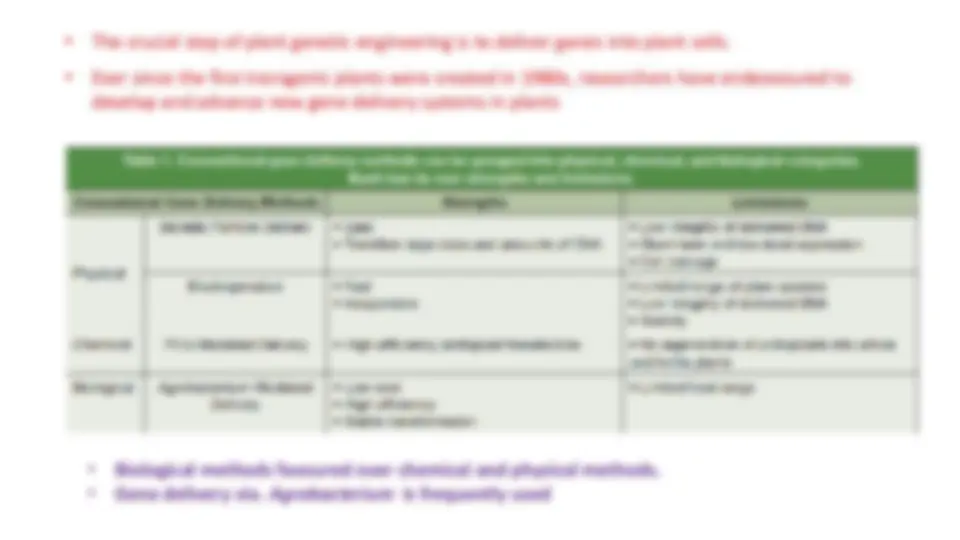
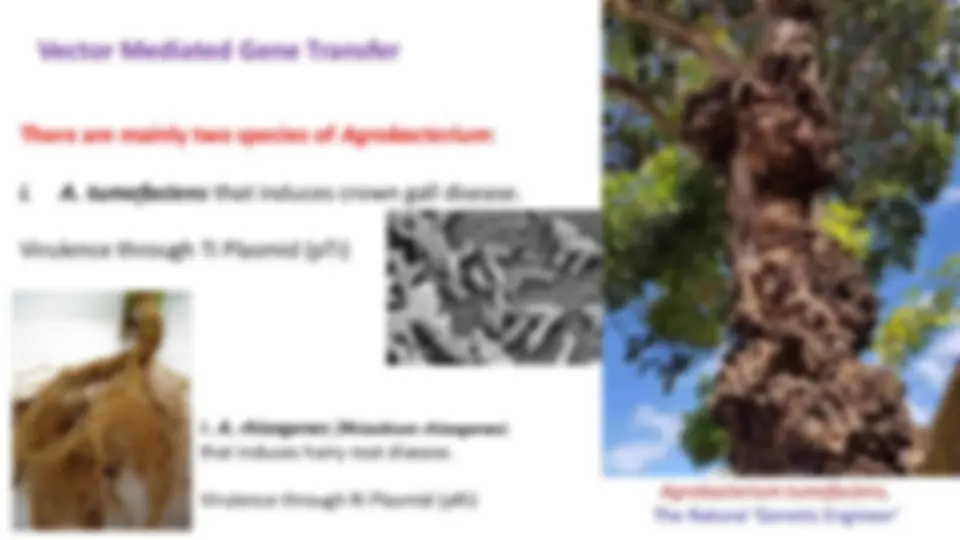
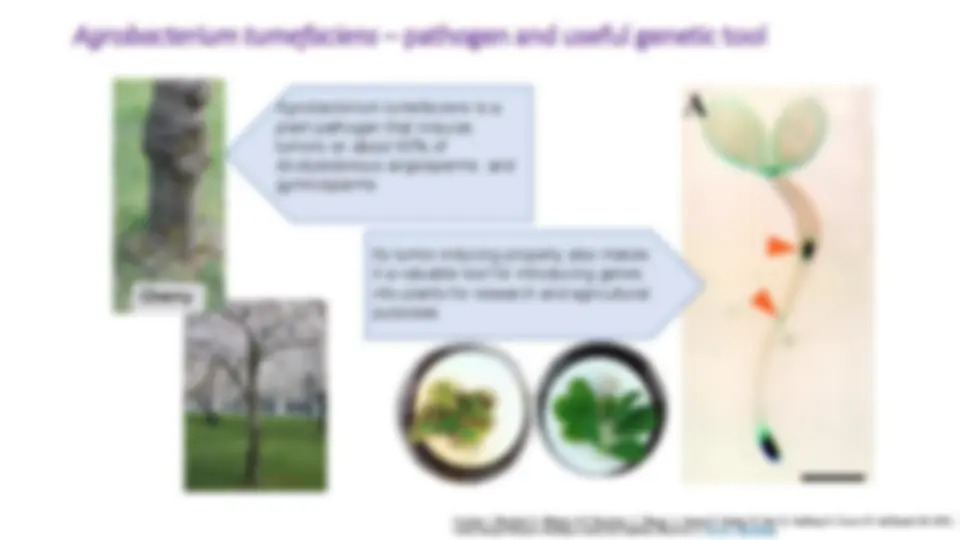
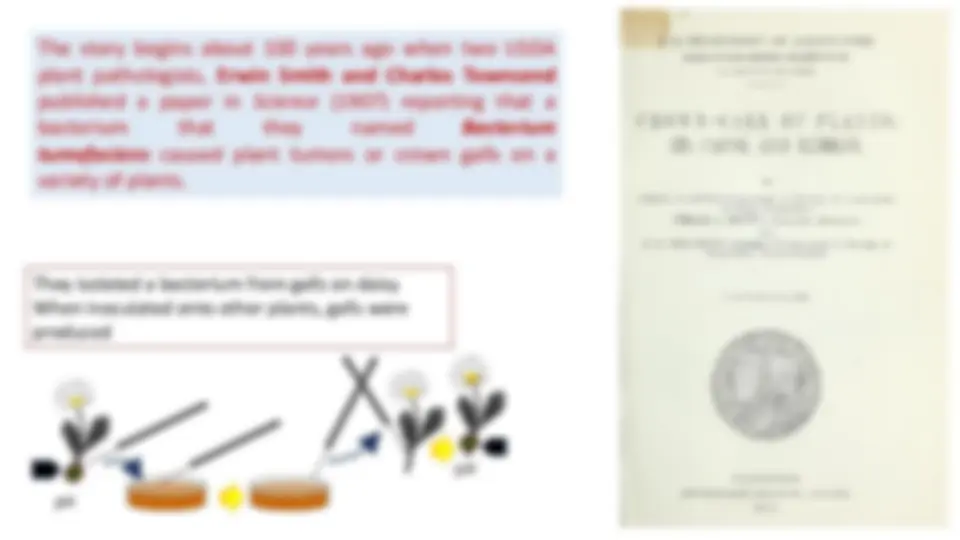
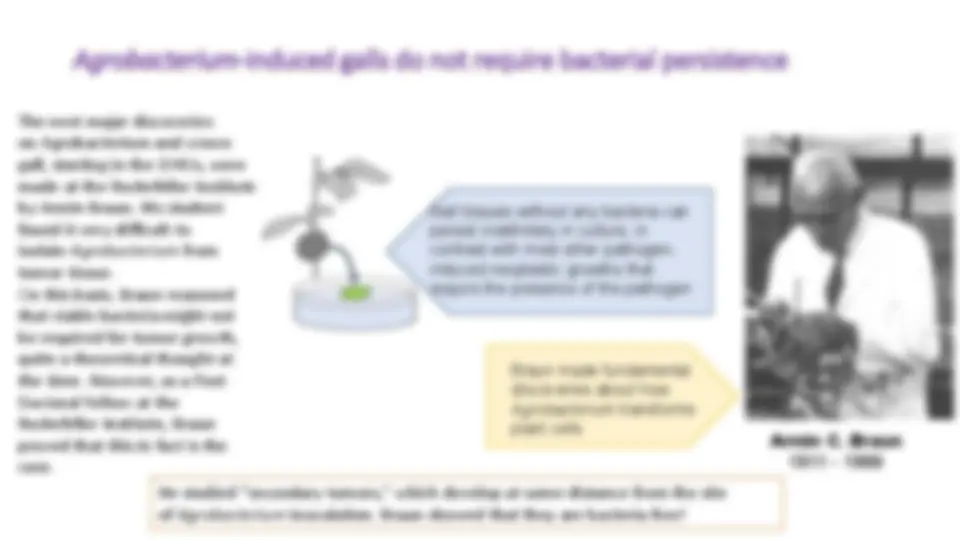
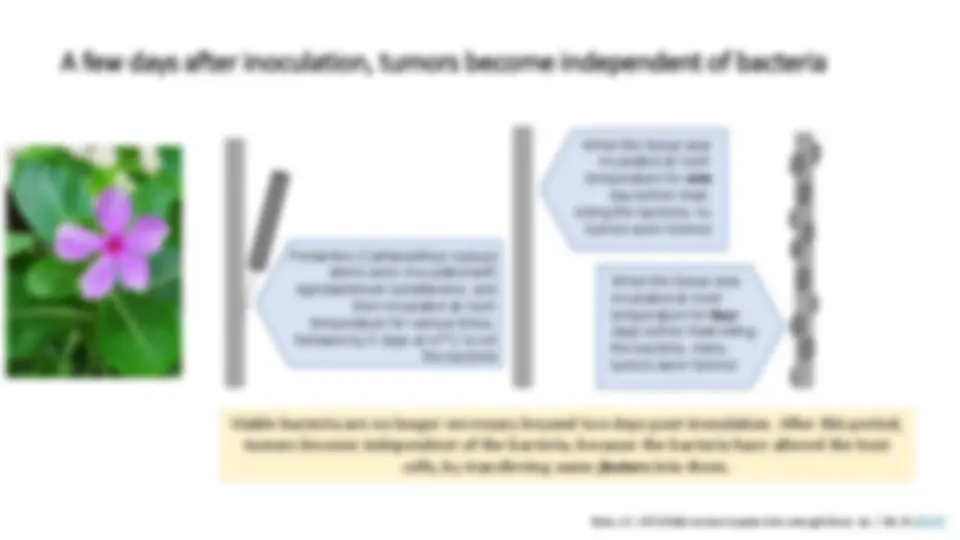
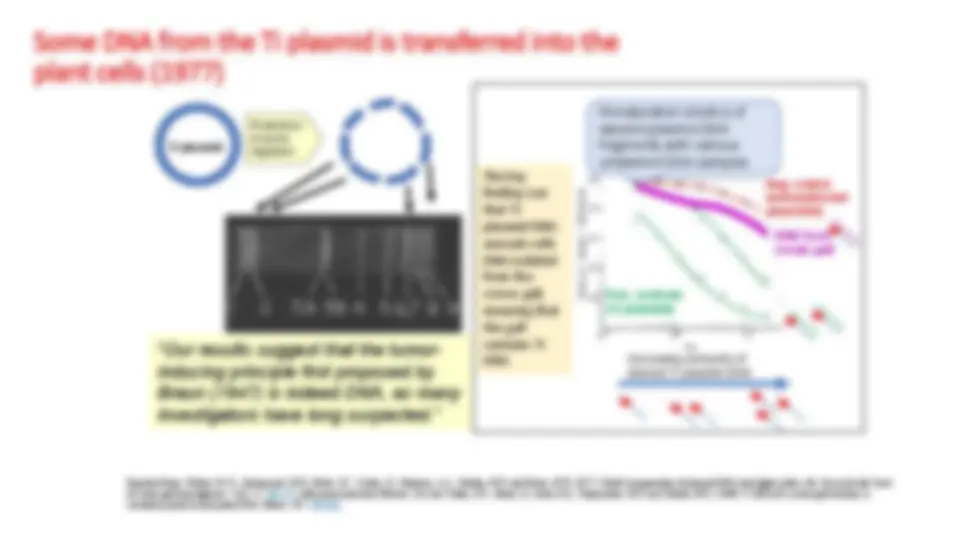
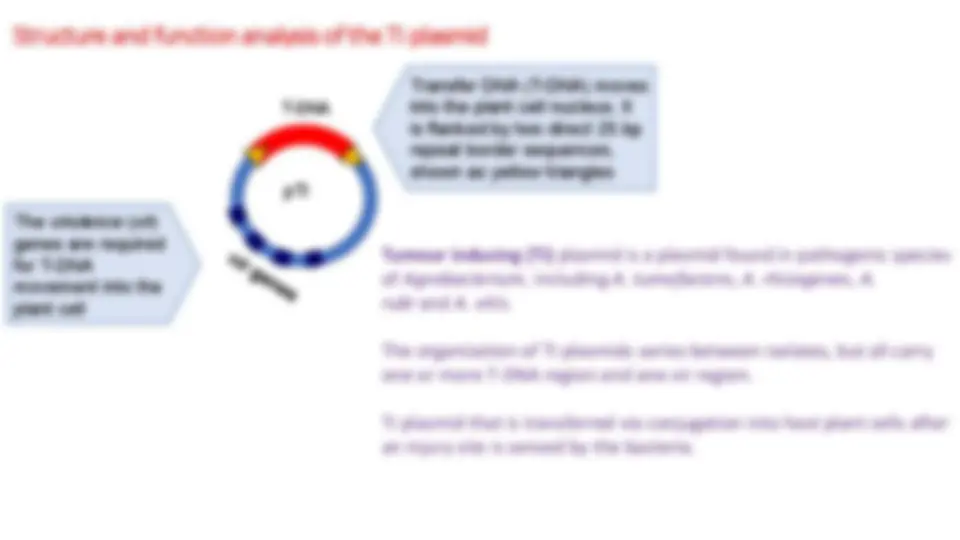
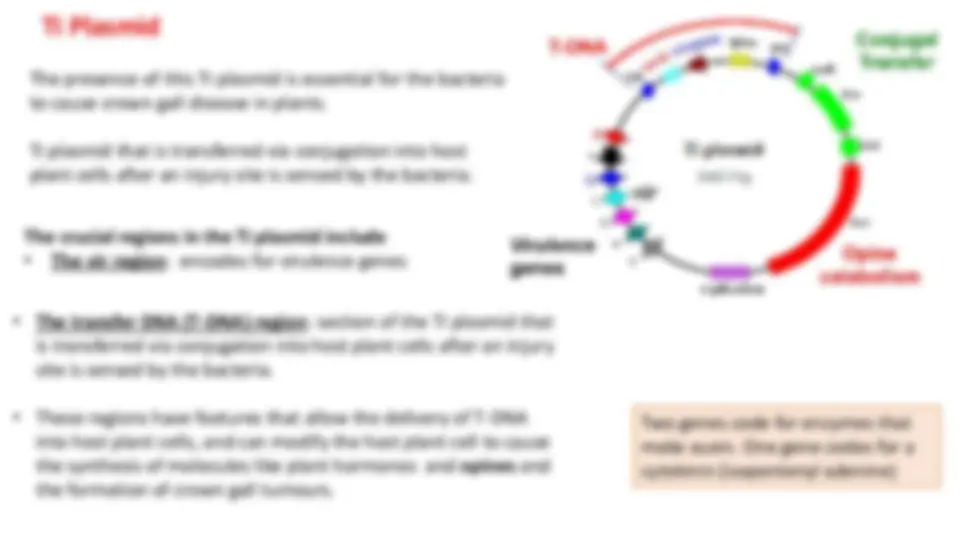
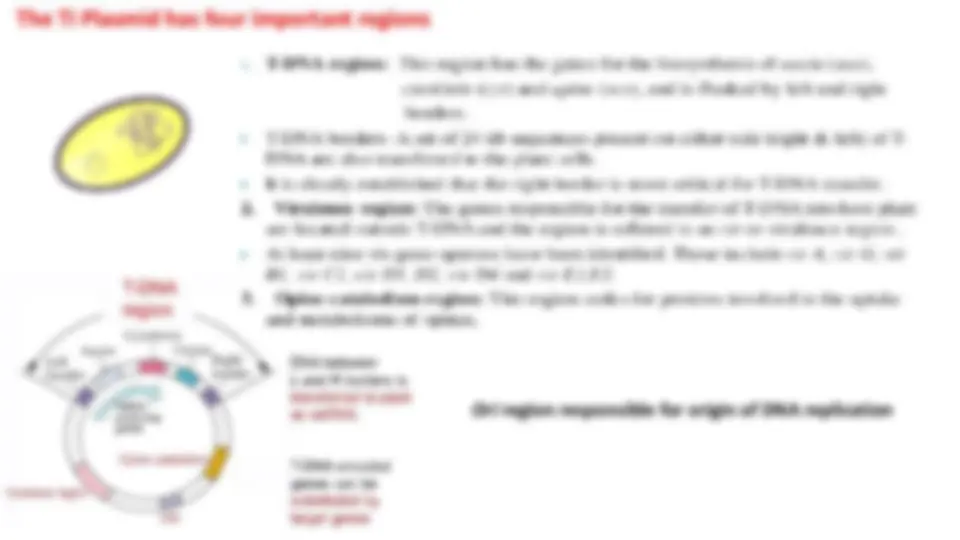


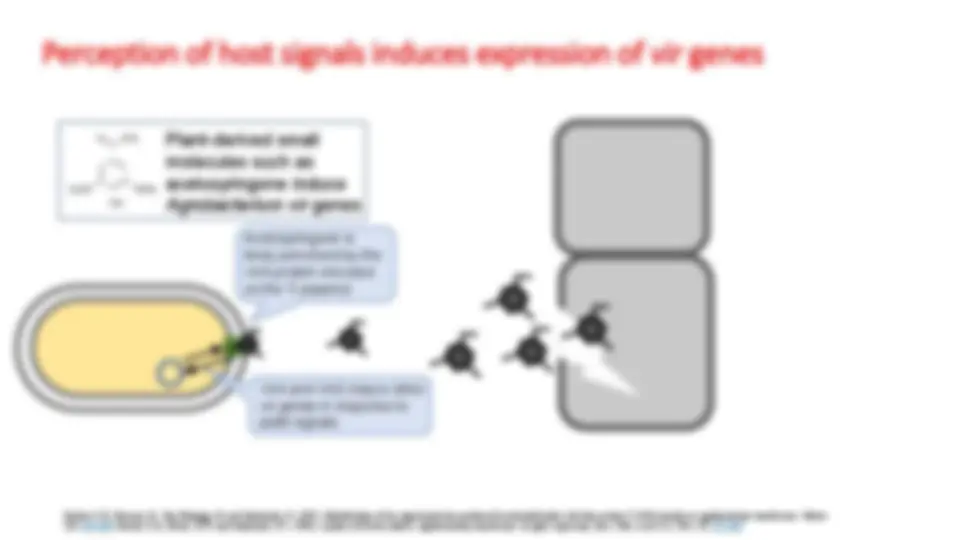
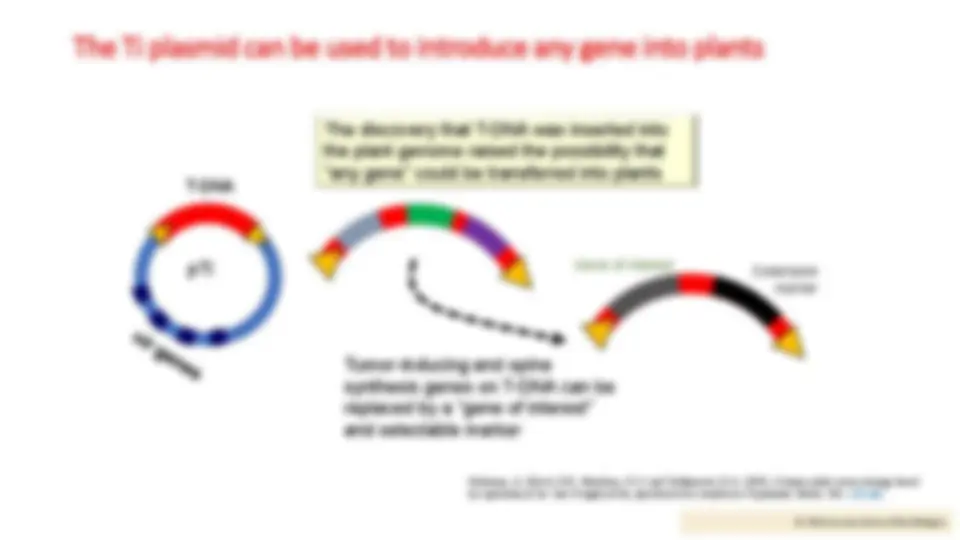
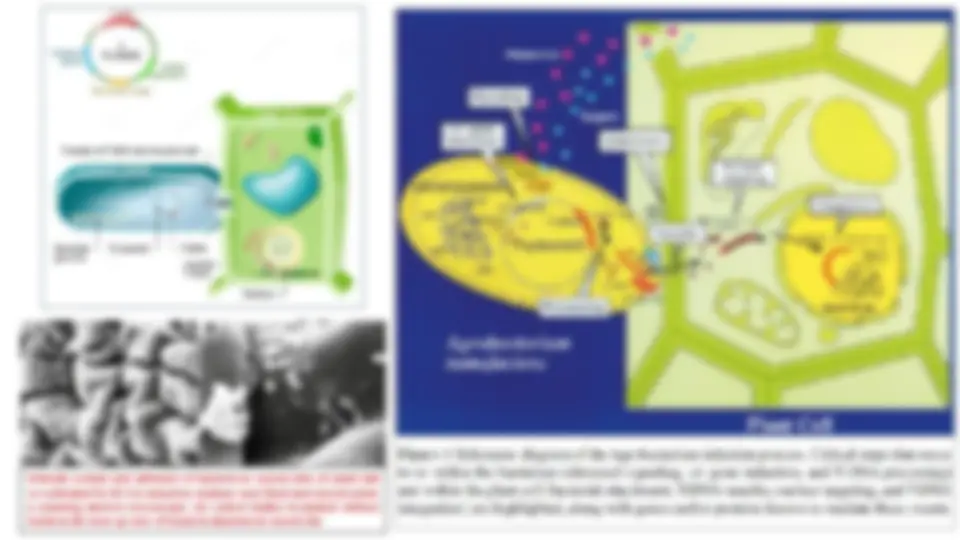
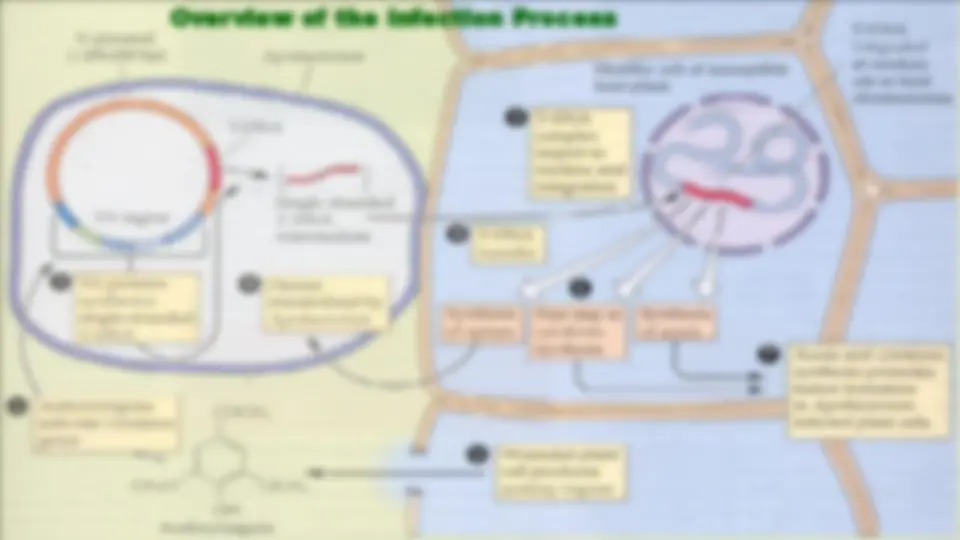
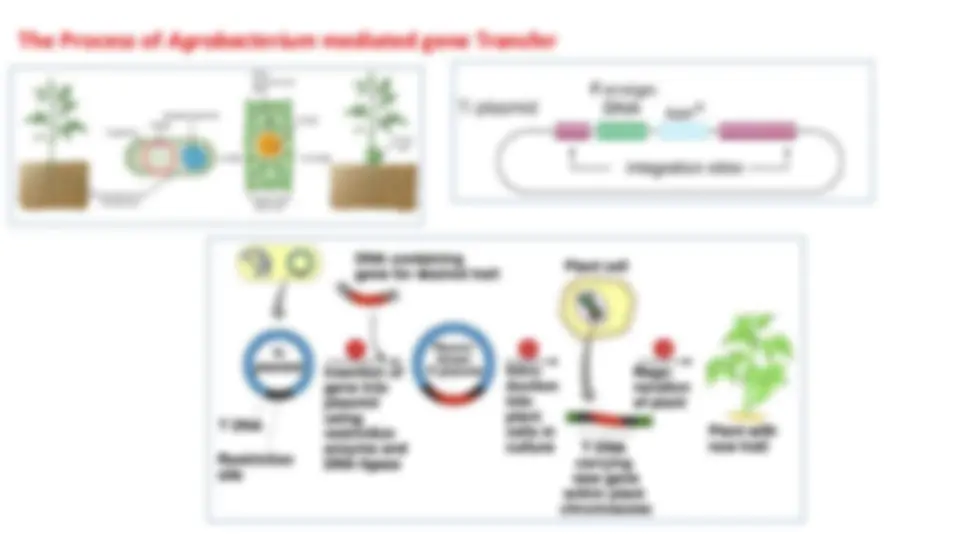


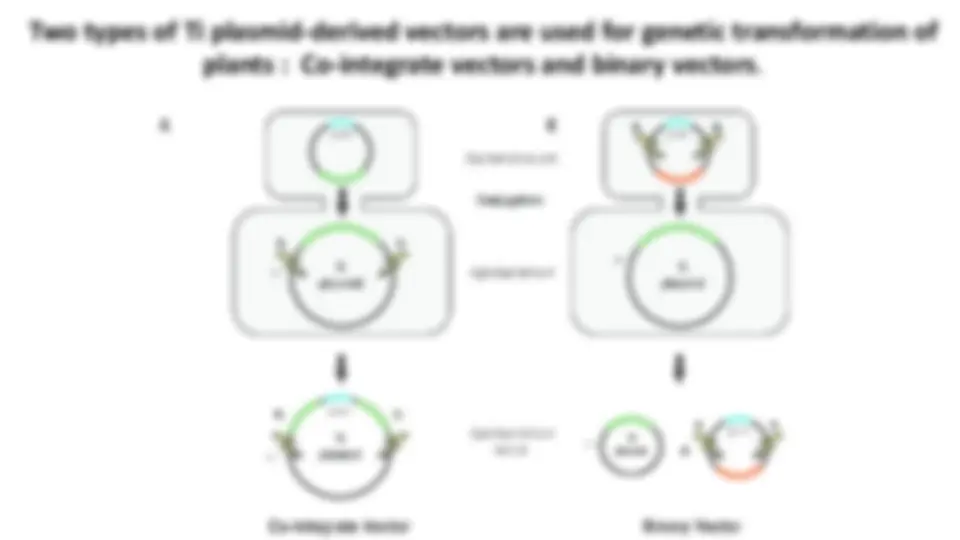
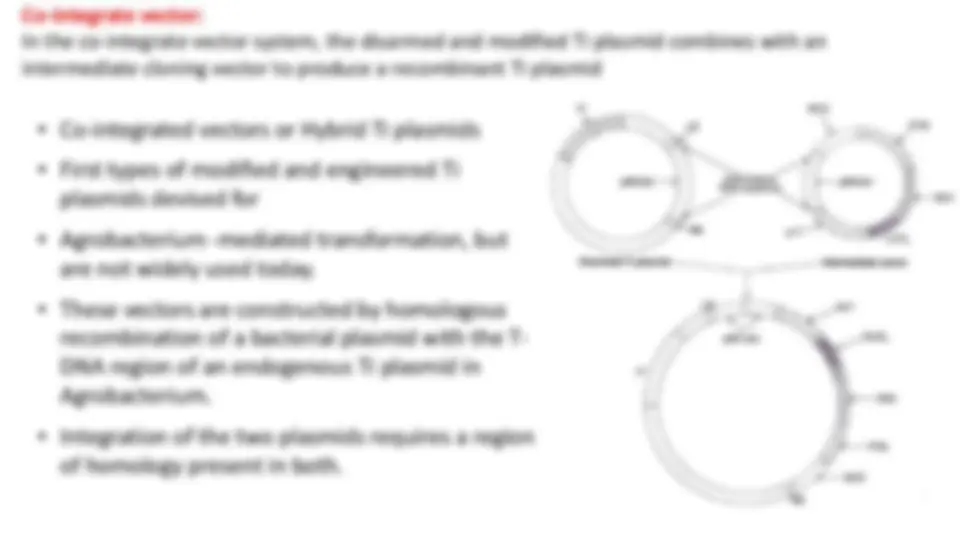
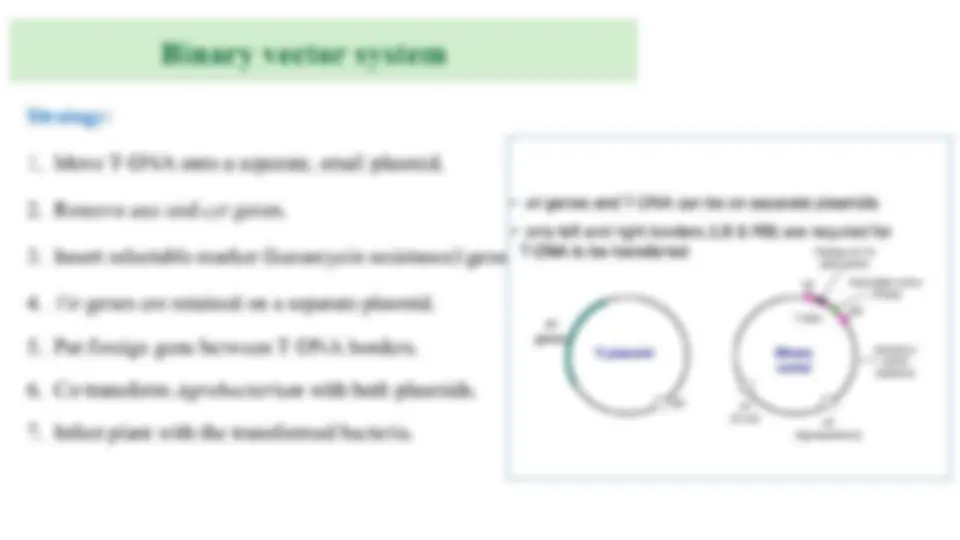
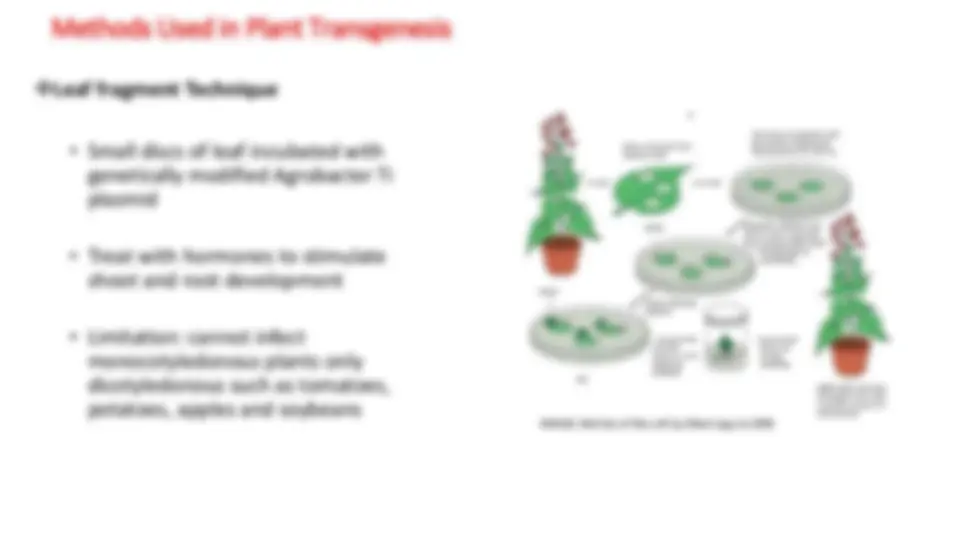
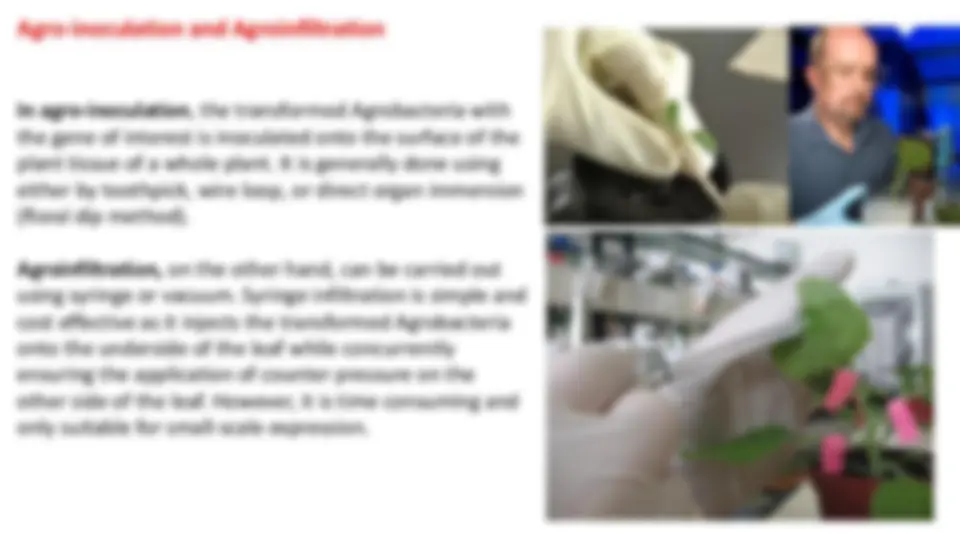




Study with the several resources on Docsity

Earn points by helping other students or get them with a premium plan


Prepare for your exams
Study with the several resources on Docsity

Earn points to download
Earn points by helping other students or get them with a premium plan
Community
Ask the community for help and clear up your study doubts
Discover the best universities in your country according to Docsity users
Free resources
Download our free guides on studying techniques, anxiety management strategies, and thesis advice from Docsity tutors
Dive into the fascinating world of plant sciences with this meticulously prepared set of notes covering key topics in Genetics, Plant Breeding, Transgenic Plants, and Serotaxonomy. Ideal for students and professionals, these notes offer:
Typology: Study Guides, Projects, Research
1 / 34

This page cannot be seen from the preview
Don't miss anything!



























Gene Transfer methods in Plants
Vector Mediated Gene Transfer ii. A. rhizogenes ( Rhizobium rhizogenes ) that induces hairy root disease. Virulence through Ri Plasmid (pRi)
Agrobacterium tumefaciens – pathogen and useful genetic tool Casimiro, I., Marchant, A., Bhalerao, R.P., Beeckman, T., Dhooge, S., Swarup, R., Graham, N., Inzé, D., Sandberg, G., Casero, P.J. and Bennett, M. (2001). Auxin Transport Promotes Arabidopsis Lateral Root Initiation. Plant Cell. 13: 843 - 852. Herb Pilcher Cherry Agrobacterium tumefaciens is a plant pathogen that induces tumors on about 60% of dicotyledonous angiosperms and gymnosperms Its tumor-inducing property also makes it a valuable tool for introducing genes into plants for research and agricultural purposes
Crown gall disease The first written record of crown gall disease, on grape, dates from 1853 Fridiano Cavara (1897) found that a bacterium causes crown gall in grape Crown gall induces growths at wound sites and severely limits crop yields and growth vigor
gall gall They isolated a bacterium from galls on daisy. When inoculated onto other plants, galls were produced
A few days after inoculation, tumors become independent of bacteria Braun, A.C. (1943) Studies on tumor inception in the crown-gall disease. Am. J. Bot. 30: 674 - 677 Periwinkle ( Catharanthus roseus ) stems were inoculated with Agrobacterium tumefaciens , and then incubated at room temperature for various times, followed by 5 days at 47*C to kill the bacteria When the tissue was incubated at room temperature for four days before heat-killing the bacteria, many tumors were formed When the tissue was incubated at room temperature for one day before heat- killing the bacteria, no tumors were formed Viable bacteria are no longer necessary beyond two days post-inoculation. After this period, tumors become independent of the bacteria, because the bacteria have altered the host cells, by transferring some factors into them.
© 2014 American Society of Plant Biologists TIP- tumor inducing principle"
Some DNA from the Ti plasmid is transferred into the plant cells (1977) Reprinted from Chilton, M.-D., Drummond, M.H., Merlo, D.J., Sciaky, D., Montoya, A.L., Gordon, M.P. and Nester, E.W. (1977). Stable incorporation of plasmid DNA into higher plant cells: the molecular basis of crown gall tumorigenesis. Cell. 11: 263 - 271. with permission from Elsevier. See also Yadav, N.S., Postle, K., Saiki, R.K., Thomashow, M.F. and Chilton, M.D. (1980). T-DNA of a crown gall teratoma is covalently joined to host plant DNA. Nature. 287: 458 - 461. Ti plasmid Restriction enzyme digestion “Our results suggest that the tumor- inducing principle first proposed by Braun (1947) is indeed DNA, as many investigators have long suspected.” Pos. controls (Ti plasmid) Neg. control (untransformed plant DNA) DNA from crown gall Renaturation kinetics of labeled plasmid DNA fragments with various unlabeled DNA samples Increasing amounts of labeled Ti plasmid DNA The key finding was that Ti plasmid DNA anneals with DNA isolated from the crown gall, meaning that the gall contains Ti DNA
Structure and function analysis of the Ti plasmid T-DNA pTi The virulence ( vir ) genes are required for T-DNA movement into the plant cell Transfer DNA (T-DNA) moves into the plant cell nucleus. It is flanked by two direct 25 bp repeat border sequences, shown as yellow triangles Tumour inducing (Ti) plasmid is a plasmid found in pathogenic species of Agrobacterium , including A. tumefaciens , A. rhizogenes , A. rubi and A. vitis. The organization of Ti plasmids varies between isolates, but all carry one or more T-DNA region and one vir region. Ti plasmid that is transferred via conjugation into host plant cells after an injury site is sensed by the bacteria.
The T-DNA region: tumor-inducing genes and opine synthesis genes T-DNA pTi Auxin synthesis Cytokinin synthesis Opine synthesis to “feed” Agrobacterium Autonomous growth Plant cell T4SS T4SS = Type IV Secretion System
OPINES – The unusual compounds Octopine Octopine- utilizing strain Nopaline- Nopaline utilizing strain The type of opine is determined by the bacterium, not the plant Opines are low molecular weight compounds found in plant crown gall tumors or hairy root tumors produced by pathogenic bacteria of the genus Agrobacterium and Rhizobium There are some 30 different opines described so far. Opine biosynthesis is catalyzed by specific enzymes encoded by genes contained in a small segment of DNA (known as the T-DNA, for 'transfer DNA’), which is part of the Ti plasmid or Ri plasmid. The opines are used by the bacterium as an important energy, carbon and nitrogen source. Chemically, opines fall into two major structural classes: